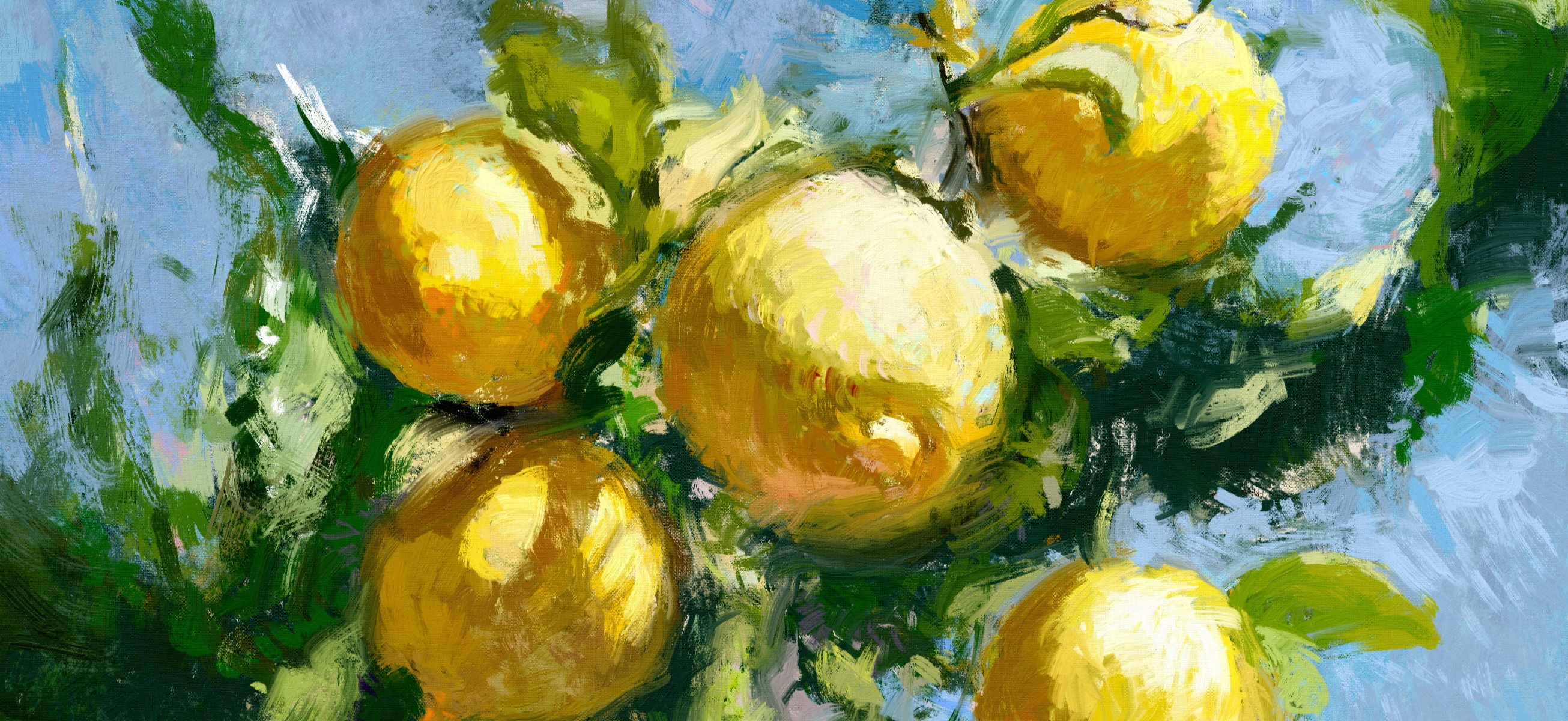Welcome to Part 2 of The Master Series with the Impressionists! In this session, Daniel Ibanez will guide us to create Impressionist-inspired paintings and explore composition, starting with the iconic Claude Monet.
Study Inspired by Claude Monet
The Impressionists faced harsh rejection in their time, yet their groundbreaking vision became foundational to art history. Let’s take a moment to reflect on their journey. Many of us first encountered Monet, Van Gogh, or Dalí in childhood, admiring their brilliance but not fully understanding their depth. Often, we might overlook Monet’s subtle genius until standing before one of his monumental works, like Water Lilies. It’s then that the beauty, influence, and innovation of Impressionism become truly undeniable.
Impressionism reimagines the Renaissance concept of sfumato—the soft blending of tones—but transforms it into a luminous dance of light, movement, and color. Together, let’s embrace Monet’s approach, where landscapes blur boundaries: trees melt into the horizon, and skies dissolve into water. These techniques offer us a vibrant, transient world of light and form to channel into our work today.
Watch the part 2 on YouTube: youtu.be/Wl-3r_rJ-60
Let´s start with a photo of lemons, drawing inspiration from Monet’s Water Lilies. Revisiting earlier lessons, such as the Degas-inspired still life with pears, we will dive fully into the Impressionist spirit.
The Impressionists embraced plein-air techniques, capturing fleeting moments of light. The lemons, bathed in natural light that shifts rapidly, provide the perfect opportunity to practice this spontaneity. Let’s work with energy and embrace the transitions that make Impressionist works so alive.
Here is a breakdown of the process of creating a textured, layered Impressionist painting inspired by Monet:
Blocking In:
To begin, lay down dark and background values with cool tones as the foundation. Inspired by Monet, we’ll avoid directly replicating the photo’s colors. Instead, we’ll layer cooler shades beneath and build warmer tones on top. For skies, let’s use cool blues like cerulean, gray, and lavender, applying a scumbling technique for depth and complexity.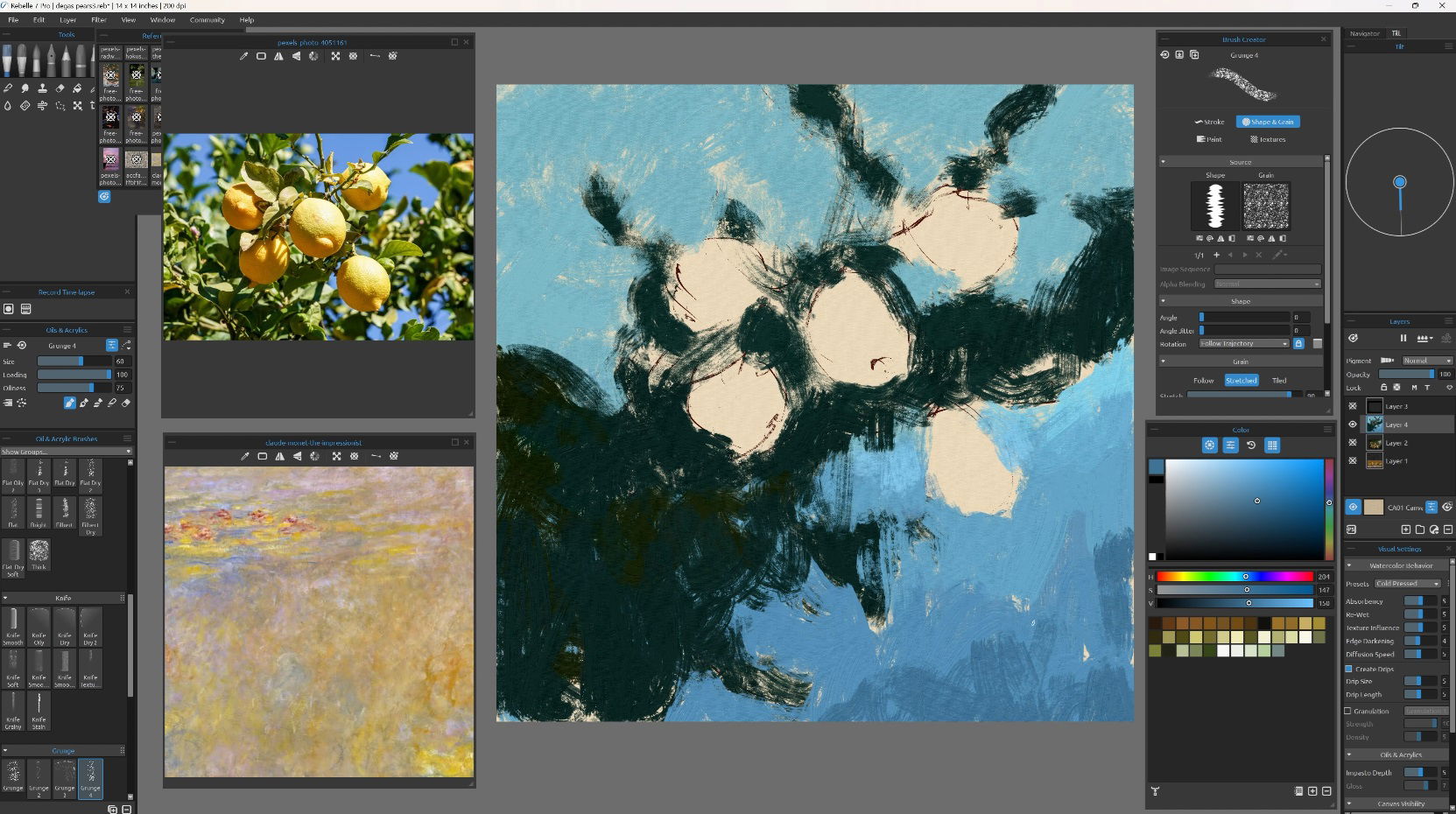 Stroke Direction and Energy:
Stroke Direction and Energy:
Impressionist brushstrokes radiate motion and life. Feather the edges of leaves and blend sky and foliage to emphasize the interplay of light and form.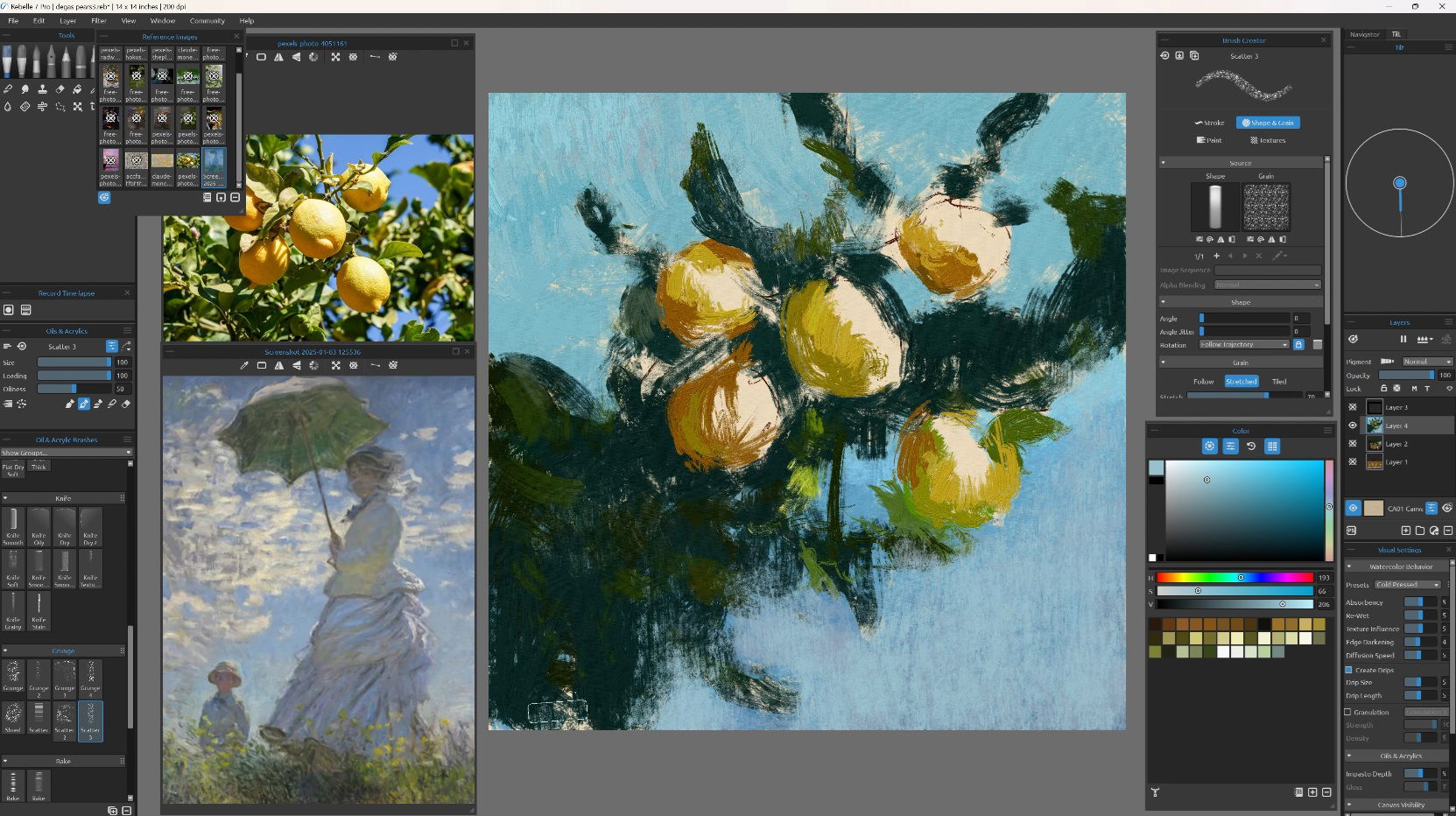 Bold Colors:
Bold Colors:
Vibrant tones are key to creating visual “vibrations.” Let’s juxtapose bold blues, lavenders, and greens while maintaining accurate values to achieve harmony and daring color contrasts.
Refining the Piece:
Finally, refine textures with smaller, detailed strokes. Soften edges and harmonize colors to echo Monet’s layering techniques, creating a tactile and vibrant effect.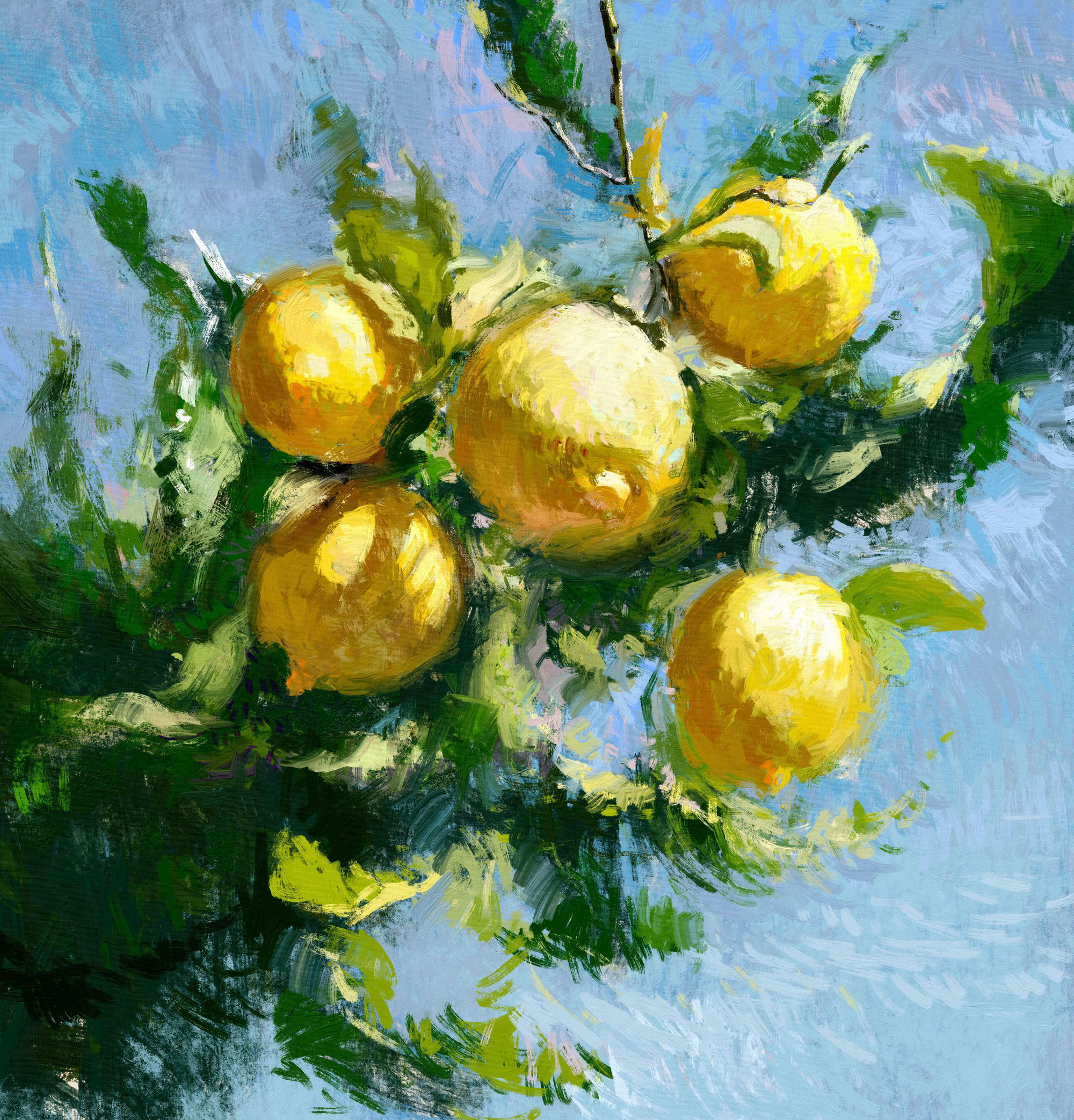
From Monet to Pollock: A Surprising Connection
When comparing Monet’s Water Lilies to Pollock’s Lavender Mist, we find an unexpected kinship. Monet’s lily pads tether to the tangible world, while Pollock’s abstractions immerse in raw energy and texture. Yet both challenge perception, weaving spatial relationships that pull viewers into their dynamic compositions.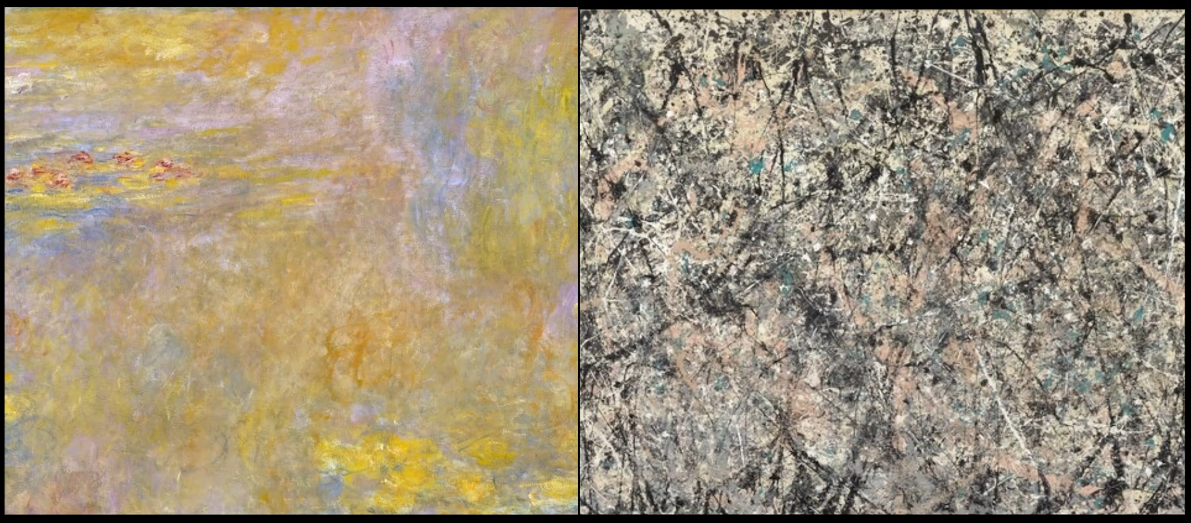 Water Lilies by Claude Monet on the left, Jackson Pollock’s Lavender Mist on the right
Water Lilies by Claude Monet on the left, Jackson Pollock’s Lavender Mist on the right
Monet’s reflections on water reveal dual perspectives: the mirrored sky above and the pond’s depth below. Pollock takes this a step further, exploding these elements into chaotic motion without a central focal point. Our goal is to explore this duality in the next study, blending impressionistic spontaneity with abstract energy to reimagine koi ponds or reflective surfaces.
Let’s reinterpret the feeling of koi fish, water, and light in motion, inspired by Monet’s naturalism and Pollock’s energy. Together, we’ll merge tones, patterns, and movement into a cohesive composition.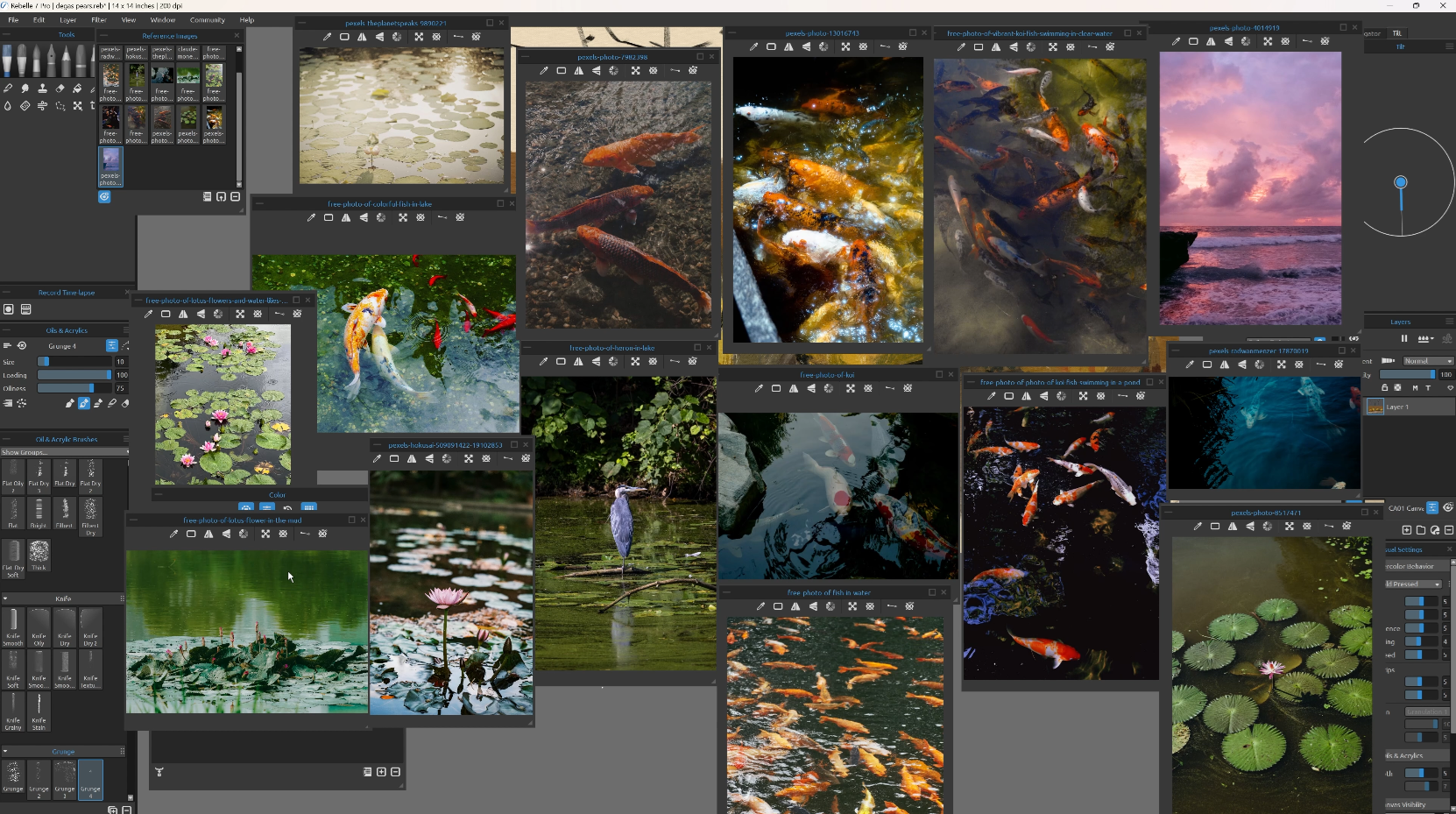 Dark to Light Foundations:
Dark to Light Foundations:
We’ll begin with darker tones and gradually layer lighter colors to create depth. This approach keeps the composition organized and lighting relationships intact.
Using Grunge Brushes:
Grunge brushes are our allies for adding texture and energy. Use them to blend tones and achieve the ‘chaotic harmony’ that defines both Monet’s and Pollock’s works.
Balancing Chaos and Order:
By softening edges and clarifying a few forms, such as koi fish, we’ll anchor the viewer while preserving an impressionistic essence.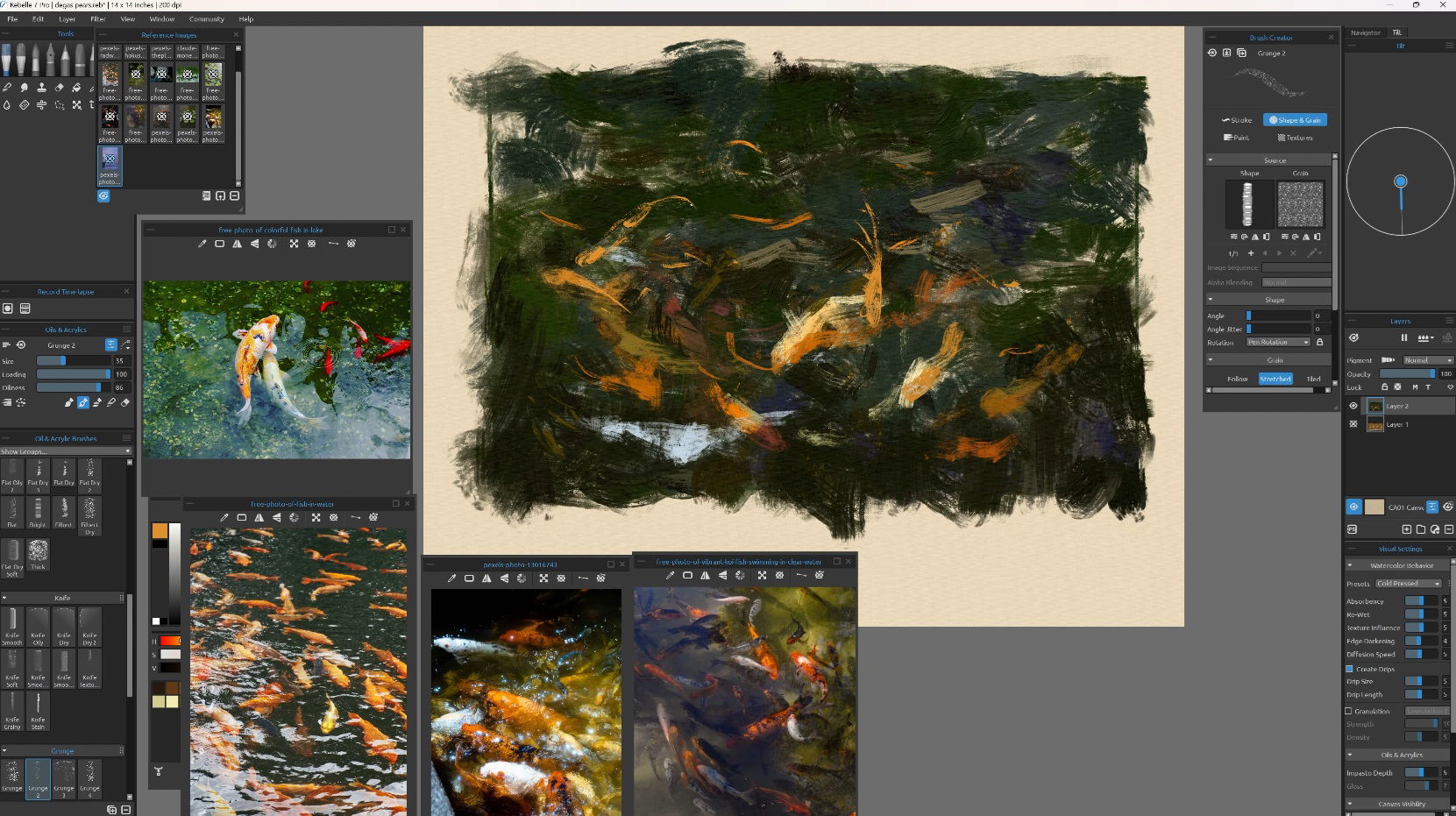 Reflections as Depth:
Reflections as Depth:
Paint reflections over the koi fish to create layers of light and obscurity, mimicking Monet’s water-themed duality.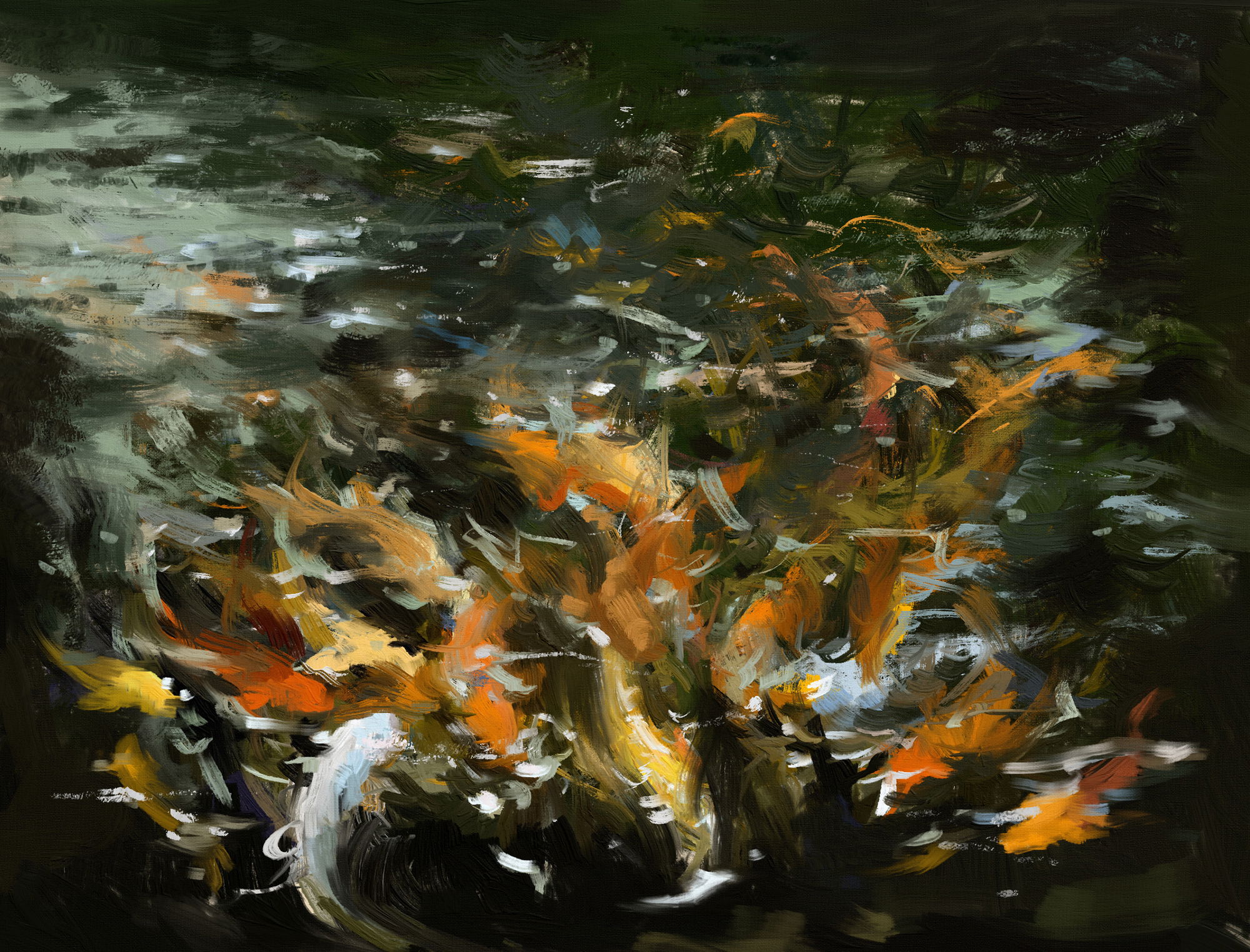
Learning Through the Masters
The freedom this style offers is unparalleled. By studying Monet’s brushwork and Pollock’s abstract energy, we can embrace bold choices in color, texture, and composition. Let it push you to experiment and move boundaries even further, knowing the masters inspire us to find our own voice.
This exploration can be carried into other projects. For instance, after experimenting with koi ponds, we could shift to portraits or abstract works with newfound confidence and spontaneity. Every brushstroke becomes a fearless step forward, and each piece is a reflection of our growth.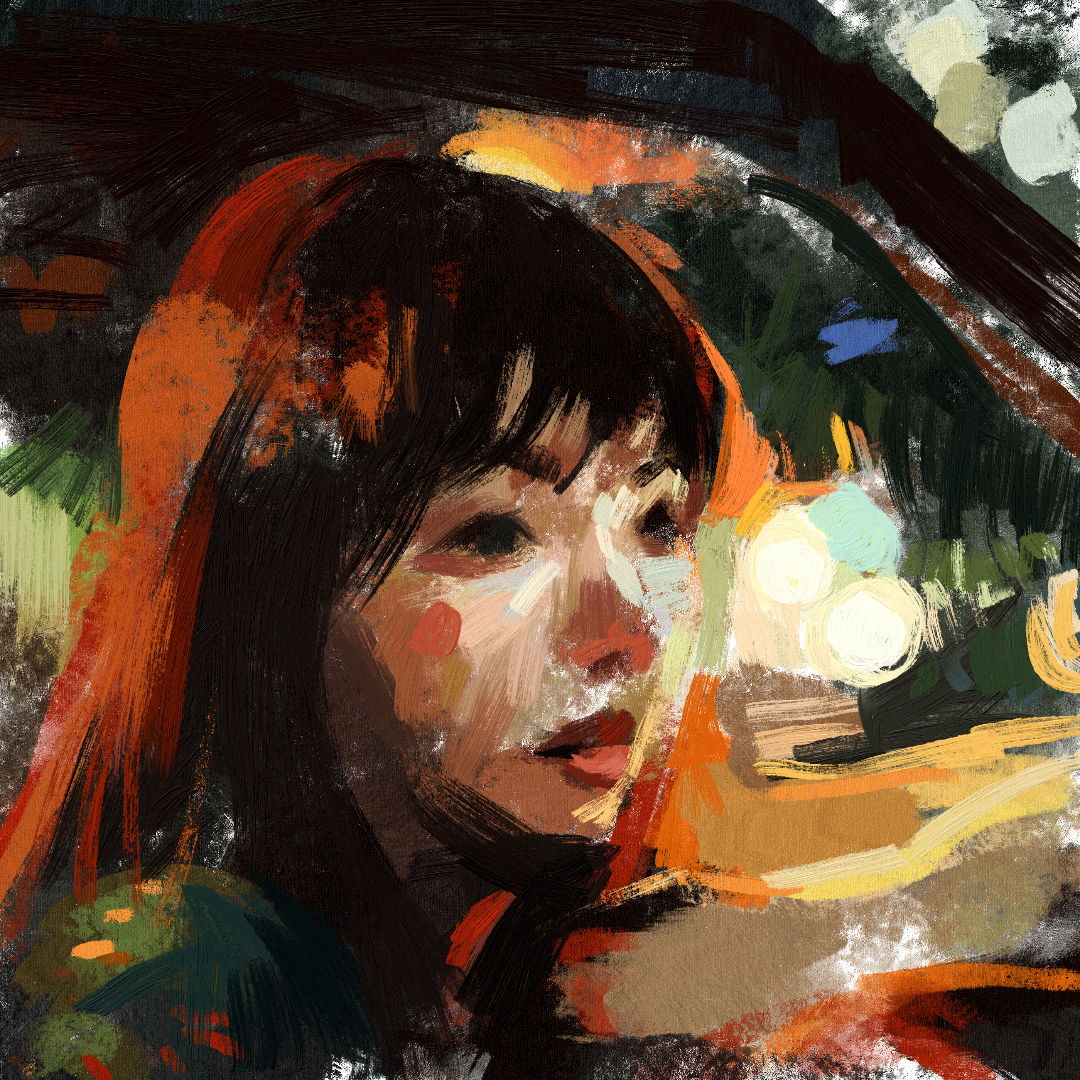 Portrait painting by Daniel Ibanez based on the Impressionists study
Portrait painting by Daniel Ibanez based on the Impressionists study
Have you missed the first part of the Impressionist Study by Daniel Ibanez? Read this blog post or visit our YouTube channel to watch the study:
Watch part 1 on YouTube: youtu.be/SEr-ofEimps
Final Thoughts: Art as Inquiry
Art thrives on curiosity and exploration. Whether painting koi ponds, lemons, or human portraits, every creation invites us to explore light, space, and emotion. By learning from the masters—from Monet to Pollock—we continue the timeless conversation of art, layer by layer, texture by texture.
Let’s continue to explore, create, and grow together—one composition at a time.
Happy Painting,
Escape Motions Team
-----
Daniel Ibanez is a fine artist and illustrator who works out of beautiful Colorado. He grew up plein air painting mountain landscapes and western imagery. He has a love of painting the human figure, portraits, and landscapes. Daniel has worked on films, comics, video games, and tabletop games. While his range of subjects is diverse, all of his work is rooted in his traditional art background. He has been an oil painter since he was 13 years old. His work covers a wide spectrum of subjects, from sci-fi illustrations to alla prima landscapes. He has a digital portrait painting class with Domestika and a growing YouTube channel for tutorials and demonstrations. Find him on Instagram and say hello!

